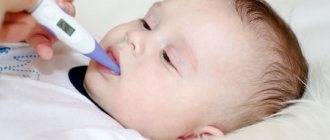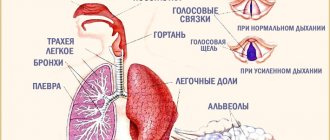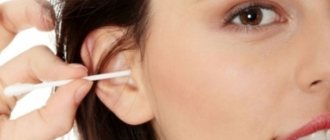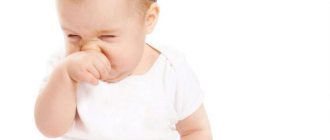What do people who decide to get into the Guinness Book of Records have to eat? There are many cases in history where stones, metal, glass and other inedible substances were consumed.
Pregnancy, a deficiency of certain substances in the body, or a mental disorder lead to such addictions. Some limit themselves to curiosity, but if they are seriously interested in the experiment of eating paper, then for this there are detailed answers to the question of what will happen if there is paper.
Possible reasons
Before doing anything if a child has eaten paper once or does it regularly, it is worth understanding why this behavior occurs and where the addiction to eating paper products comes from.
- Quite often, eating paper and other non-food products is simply a manifestation of curiosity. The baby tests the objects around him, studying them. Such actions are typical for children aged 1–1.5 years. And since paper products are around us quite often, the little one’s attention is attracted by packaging, cardboard books, toilet paper, napkins, and newspapers.
- Another common reason for infants and children aged 1–2 years to consume paper products is teething. When the gums itch and itch, the baby pulls into the mouth everything that is quite dense to the touch that comes to hand. Therefore, mothers often have to select books with hard cardboard pages so that they remain intact.
- A child’s desire to chew paper or cardboard may be associated with a lack of plant fiber in his diet. The basis of paper products is cellulose. It is insoluble in water and is not broken down in the digestive tract, since the body does not have enzymes suitable for breaking down cellulose. As cellulose passes through the intestines, it aids digestion, much like the fiber in plant foods.
- A child can eat paper products simply because he likes their consistency and taste.
- Often, children's taste changes due to iron deficiency anemia. Then the baby begins to eat inedible things, for example, chalk, plaster, soil or cardboard. Such manifestations of anemia also occur in older children, for example, at 10 years old.
If strange food preferences are found in a schoolchild or teenager, then you need to think about anemia first. The famous pediatrician Komarovsky also thinks so.
What to do if your baby falls or eats paper: a cheat sheet from the doctor
The most anxious people in the world are undoubtedly new parents. Hundreds of questions, the answers to which need to be known here and now, torment them 24 hours a day: why is he crying, is he eating correctly, why doesn’t he like to swim, etc. We asked neonatologist Lyudmila Brodskaya to answer them and the result was a kind of cheat sheet for worried parents.
Neonatologist Lyudmila Brodskaya
– One of the most common problems that people like to “scare” young mothers with is colic in babies. Are they really that scary? What are the reasons for their appearance and what actions should parents take?
– It is impossible to say unequivocally what exactly is the cause of colic. Parents often call any attack of inconsolable sudden crying in a healthy baby colic. Colic is rarely observed in children older than three months.
Bloating can be caused, for example, by the accumulation of gases, and this reason is twofold: the baby begins to scream in pain, sometimes holds his breath while screaming, and then convulsively swallows air. Excess of the latter enters the stomach - the pain intensifies.
What to do: in this case, tummy massage, bending the child (the same “column” that is recommended to do after each feeding), glycerin suppositories (only after consultation with a doctor) will help. If a mother is breastfeeding, then some foods she eats (for example, nuts, dairy products) can lead to the formation of gases, so carefully monitor your diet (read more about colic).
– Another nightmare for young parents is teething. You can't hear enough stories: fever, crying all day long, and lack of appetite... How to alleviate the baby's suffering?
– First of all, don’t panic in advance: all children cut their teeth differently, and I can say that in most cases the horror of the “teething” period is exaggerated - in my practice there are almost more children for whom the appearance of teeth either did not cause any worries at all , or they were minimal. Among the symptoms that often accompany teething are fever, irritability of the child, crying, problems with stool, nasal congestion, and increased salivation.
What to do: Most of these symptoms go away on their own within a few days without treatment. If the baby does not get better, urgently show him to the pediatrician: perhaps teeth are not the reason for the cough/runny nose, and the child needs to be treated for another illness (the child is teething).
– How dangerous is it for a baby to fall from a changing table or sofa?
– Don’t be self-flagellation: you are not the first parents to whom this has happened at least once, but almost all mothers and fathers have children who fail. Children, fortunately, are strong enough and, most likely, nothing serious will happen to them due to a fall. Of course, this does not mean at all that you can safely leave your child alone in the room: no one has canceled parental responsibility.
What to do: after the fall, calm the baby down, examine him carefully and carefully observe him for another day. It is definitely recommended to seek medical help if you notice one or more of the following symptoms: inappropriate behavior, vomiting, convulsions, pupils of different sizes, bleeding from the nose and ears, etc.
- And if the mother saw, but did not have time to stop, and how the child swallowed a piece of paper, washing powder or some medicine, for example, nasal drops...
– The key words here are “if mom saw” - it means he won’t have time to eat much. A piece of paper (it wasn’t a notebook that he managed to eat before his mother ran up) will do no harm, just like anything else - it’s unlikely that the baby will have time to pour a package of washing powder into himself, and, most likely, he’ll spit it out - children don’t eat what tasteless, and washing powder is not one of children's favorite treats.
What to do: if the baby did not have time to swallow the paper, carefully remove it from his mouth. Managed? Not scary; nothing will happen from a tiny piece. Give them something to drink and redirect their attention: for example, show them that tearing paper into long strips is much more exciting than chewing.
However, there are also serious situations. In my practice, there was a case when the mother did not see, and the daughter decided not to report that she had swallowed several coins. The mother suspected something was wrong when the child began to vomit, the girl began to wheeze and complain of chest pain. The ER doctor immediately asked if she had swallowed anything. The girl told about the coins. Foreign bodies were removed under anesthesia in the hospital.
Read also: what to do when a child chokes - first aid
– What if a child suddenly has spots of unknown origin?
– In such cases, there is no need to engage in amateur activities and treat “the best remedies according to the neighbor’s prescription” and anoint the child with miraculous ointments. If the cause of the spots is a viral disease, then at best it will be useless; at worst, you will waste time healing the spots themselves, instead of treating the cause of their occurrence.
What to do: Of course, you need to see a doctor.
– Pets in the same house as a baby: is it dangerous or not, for example, if a dog licks a baby’s face? How important is the fact here - whether the animal is vaccinated or not?
– I’ll start from the end, namely with vaccinations: it’s categorical here - a pet must be vaccinated, there are no other options. Cases of rabies in pets are uncommon, but they do occur. Do you want to “give” yourself and your child a tiny chance of being bitten by a sick animal? The question is rhetorical. Therefore, vaccinate every year. Next, another important point is animal allergies. It may or may not occur in a baby; it is impossible to predict. It’s up to you to decide what to do with your animal if an allergy occurs. But be sure to get tested to identify the allergen; maybe your Murzik has nothing to do with it, and the source of the disease is different.
What to do: if a healthy vaccinated animal showed its sympathy for the child by licking him, nothing will happen, the question is purely personal - how do you feel about this.
We also read: A child has fallen: how to feel sorry for him and calm him down?
Source
Do you want to be the first to read our materials? Subscribe to our telegram channel, Facebook page, or VKontakte group.
We are at Yandex.Zen - join us!
Is paper dangerous for digestion?
Plain paper does not pose a particular danger to the human body, which cannot be said about printed publications: after all, they are made using dyes that are not allowed to be eaten. In addition, paper products may contain paper clips, clips and other things dangerous to children. They can really harm him, so when your baby wants to eat paper, you need to pay special attention to making sure that such objects are inaccessible to him.
Ordinary clean paper without ink or paint can only be harmful if it is eaten in large quantities. Excess cellulose can cause constipation or even cause intestinal obstruction.
How to wean a child from eating inedible things?
Most often, eating inedible things does not become a systematic activity, but as soon as your baby eats sand again, try to distract him. Show him a new toy, a cat running past, a plane in the sky. If you notice that such a child’s reaction was the result of your inattention to him, then show more care, put aside your worries, talk to the child, play games together.
You can satisfy your baby’s interest in bulk materials using safer methods - scatter different types of cereals and pasta on the table at home. Play with these items, put them in piles, sort them, put them in jars or plates. Surely the child will appreciate this activity.
Concern should be expressed when a child eats inedible things, including sand, for an extended period of time. You need to contact specialists when this continues at a more conscious age, if your child is 3-5 years old.
Pediatrician of the 2nd category, allergist-immunologist, graduated from the Belarusian State Medical University of the Federal Agency for Health and Social Development.
Share with friends!
Mental disorder
Eating something inedible can be considered a mental disorder. Some cases are related to allotriophagy: a person is unconsciously attracted to swallowing objects with a certain property, which is dangerous to health.
Paper food addiction is more common in women. Usually this is iron deficiency anemia, and sometimes it is neurosis. Neurosis could have been caused by stress and psychological trauma.
Other causes include hunger and anorexia. When the supply of nutrients in the body is used up, and there is an internal prohibition regarding food products, a tendency appears to gravitate towards what is in sight. If blood microelements are normal (according to the test results), it is recommended to consult a psychiatrist.
If no deviations are identified, all that remains is to help yourself: for example, each time transfer your attention from the paper to another object, imagine the unpleasant properties of the paper in bright light - as if it were made from something inappropriate for food. If you manage to influence consciousness in this indirect way, then the desire to eat paper will disappear by itself.
Strange food addictions in the world
A few facts about strange eating disorders:
- A US woman has gained worldwide fame for eating cat hair for 15 years.
- Until 2011, a resident of India consumed iron in small portions, and about 6 kg of small objects accumulated in his intestines. When surgeons removed the foreign bodies from him, he died.
- In Serbia, an elderly man ate glass objects: light bulbs, plates. He cited heartburn as the reason for such a diet, which he wanted to get rid of.
- Jade Sylvester from the UK has developed a habit of consuming a roll of toilet paper every day since she was pregnant. The addiction did not leave her even after childbirth. The woman now has her favorite types of paper. The need arose due to a lack of minerals, but grew into a habit of a mental nature.
Doctors advise those who feel the need to consume paper to include foods enriched with minerals in their diet, try switching to seaweed, fruits, herbs, vegetables, and nuts.
Doctor's opinion
Experts are sure that a person who eats paper is deficient in minerals and vitamins; microelements, usually iron and calcium, do not enter his blood. The missing substances can be obtained in a more acceptable way - in the form of dietary supplements on the advice of a doctor.
The doctor will most likely prescribe a blood test, examine the level of hemoglobin, red blood cells, and serum ferritin.
Why do children eat sand and soil?
What to do if a child eats sand or feasts on earth? What should the parents' reaction be? First, find out the reason for eating such substances. If your child has done this for the first time, then it’s too early to panic - kids are extremely inquisitive, so they study new subjects.
In such a situation, it is recommended that mom or dad calmly explain to the baby that there is no need to do this. You should not frighten him with the end of the walk, since in this way the baby shows a normal desire to understand the world around him. Experts are confident that this phenomenon will pass as they grow older.
Psychologists are of the opinion that eating sand is a consequence of certain psychological factors. This is what children who experience a lack of attention from their parents do. It is quite normal that as soon as a mother catches her child eating sand, she will immediately rush to save him. Similarly, children express their protest against the prohibitions of adults.
What to do to prevent this behavior in your baby? First, reconsider your time together while walking. Play more with your child, spend less time talking on the phone and communicating with other mothers on the playground.
Find something to keep your baby occupied so that he doesn’t have the desire to put foreign objects in his mouth.
Pediatricians say that the reason for the baby’s strange behavior is a lack of certain vitamins and minerals in the body. Thus, on an instinctive level, children make up for their deficiency.
We suggest you read How to check the quality of soda at home
If a baby eats sand, most likely there is not enough silicon in his body. An insufficient amount of this mineral can further provoke joint disease and even anemia. When the little one has eaten enough soil, this indicates a low hemoglobin content, iron deficiency and vitamin deficiency. In such a situation, you need to do the following:
- undergo examination;
- get tested;
- find out how well the baby absorbs calcium;
- consult your pediatrician.
If we approach the problem from a hygienic point of view, then in the sand, soil, on stones there may be various types of cocci, fungi, animal hair, parasite eggs, fly larvae, etc. When the sandbox is public and not domestic, for example, located in the courtyard of an apartment building, then it can easily become a place to relieve the needs of various animals. They most often become carriers of pinworms, roundworms, and toxocara, which can then settle in the child’s intestines.
Eating sand in a public sandbox is fraught with infection by various parasites.
Remnants of garbage pose a great threat: small pieces of glass, cigarette butts, small pebbles, hard paper, etc., which infest a sandbox or flowerbed. Eating sand is sometimes dangerous: the baby can choke or damage the mucous membrane of the mouth and teeth.
If a child eats paper
Paper or cardboard in its usual form is not dangerous for children. And if a child has eaten paper, you should worry about the presence of printed prints on it, when it can cause poisoning, as well as paper clips and metal parts for joining.
What happens if there is paper? The cellulose in its composition acts as a brush on the digestive tract, helping in some cases to cope with constipation. It’s a completely different matter if pages from magazines end up in the body: the paint and composition can lead to negative consequences.
How does a child develop the habit of eating paper? Main reasons:
- A child at an early age (up to two years) actively explores the world, and paper is also of interest to him, including colored wrappers, drawings, and pages with pictures.
- Teething forces the baby to put everything in its mouth, including paper, into its mouth.
- The baby lacks minerals, so his taste preferences change. An accurate diagnosis is necessary.
- If there is no deficiency of substances in the body, the child probably just likes the effect of paper dissolving in the mouth.
Paper composition
Paper consists of wood cellulose, it contains filler minerals and dyes. It is clear that none of these substances is beneficial to the body. If we consider the question “is paper digested in the stomach,” then the answer is negative.
Cellulose is a naturally occurring polysaccharide. It is not absorbed by the body and is not dangerous, but moving through the cecum it can cause appendicitis. As it moves through the intestines, the unprocessed substance can cause constipation. When consuming paper, you need to remember that it swells greatly in the stomach, so digestion may stop.
The following components pose a great danger to the body: talc, gypsum, kaolin, titanium dioxide. You can imagine what will happen if you eat paper: under the influence of these elements on the intestinal walls, nausea is possible, and in the long term - gastritis or ulcers.
Types of paper
The effect on the body of a certain type of paper is different. Let's look at the most common options.
What happens if there is a newspaper? The mercury and lead in paper with ink are very poisonous and can be fatal. Resins, dyes, and types of glue used in the production process are harmful to such an extent that eating a ticket made from paper of this type for good luck leads to poisoning.
What happens if you eat notebook paper? Acid is used to bleach writing paper, and the sheets are not always thoroughly washed after this. If the paper is not properly cleaned, you may notice steam rising from it when you use it in the printer.
Parchment, the paper in which food is wrapped, is colorless, tasteless and relatively safe. If a small amount of it was eaten with pies, then it did not have any effect on the body.
Is it possible to eat toilet paper? Based on the fact that it was produced with the expectation of interaction with the human body, it must be said that the volume will be limited only by the capabilities of the stomach.
Paper napkins are similar in composition to toilet paper. The wood is crushed, steamed, heated, bleached, pressed, and dried. Then, using a mixer, the mousse is prepared, the foam is freed from moisture, the fibers are pressed on a burning cylinder, and removed from its surface. The resulting material becomes soft and has the ability to absorb moisture. What happens if you eat paper in the form of table napkins? They are antibacterial and cannot cause allergies. Environmentally friendly paints are used for paper napkins. In this case, everything is individual, but a more gentle result is likely than with writing paper.
Why does a child eat paper and how to wean him from it? What happens if there is paper?
Before doing anything if a child has eaten paper once or does it regularly, it is worth understanding why this behavior occurs and where the addiction to eating paper products comes from.
- Quite often, eating paper and other non-food products is simply a manifestation of curiosity. The baby tests the objects around him, studying them. Such actions are typical for children aged 1–1.5 years. And since paper products are around us quite often, the little one’s attention is attracted by packaging, cardboard books, toilet paper, napkins, and newspapers.
- Another common reason for infants and children aged 1–2 years to consume paper products is teething. When the gums itch and itch, the baby pulls into the mouth everything that is quite dense to the touch that comes to hand. Therefore, mothers often have to select books with hard cardboard pages so that they remain intact.
- A child’s desire to chew paper or cardboard may be associated with a lack of plant fiber in his diet. The basis of paper products is cellulose. It is insoluble in water and is not broken down in the digestive tract, since the body does not have enzymes suitable for breaking down cellulose. As cellulose passes through the intestines, it aids digestion, much like the fiber in plant foods.
- A child can eat paper products simply because he likes their consistency and taste.
- Often, children's taste changes due to iron deficiency anemia. Then the baby begins to eat inedible things, for example, chalk, plaster, soil or cardboard. Such manifestations of anemia also occur in older children, for example, at 10 years old.
If strange food preferences are found in a schoolchild or teenager, then you need to think about anemia first. The famous pediatrician Komarovsky also thinks so.
Is paper dangerous for digestion?
Plain paper does not pose a particular danger to the human body, which cannot be said about printed publications: after all, they are made using dyes that are not allowed to be eaten.
In addition, paper products may contain paper clips, clips and other things dangerous to children.
They can really harm him, so when your baby wants to eat paper, you need to pay special attention to making sure that such objects are inaccessible to him.
Ordinary clean paper without ink or paint can only be harmful if it is eaten in large quantities. Excess cellulose can cause constipation or even cause intestinal obstruction.
Alternative to cellulose
If the taste of paper is attractive, why not look at its food alternative? Food grade cellulose is found in some dietary supplements. For example, TianShi products.
There is such an additive in foods, more often in sausages, and it is known under the name E 460. It is not useful, but in this case it becomes possible to change a destructive food addiction to a more civilized one.
Mental disorder
Eating something inedible can be considered a mental disorder. Some cases are related to allotriophagy: a person is unconsciously attracted to swallowing objects with a certain property, which is dangerous to health.
Paper food addiction is more common in women. Usually this is iron deficiency anemia, and sometimes it is neurosis. Neurosis could have been caused by stress and psychological trauma.
Other causes include hunger and anorexia. When the supply of nutrients in the body is used up, and there is an internal prohibition regarding food products, a tendency appears to gravitate towards what is in sight. If blood microelements are normal (according to the test results), it is recommended to consult a psychiatrist.
If no deviations are identified, all that remains is to help yourself: for example, each time transfer your attention from the paper to another object, imagine the unpleasant properties of the paper in bright light - as if it were made from something inappropriate for food. If you manage to influence consciousness in this indirect way, then the desire to eat paper will disappear by itself.
How much paper can you eat?
The human body, like many mammals, does not have enzymes capable of dissolving cellulose. In the digestive tract of some herbivores there are symbiont bacteria that facilitate the absorption of this polysaccharide.
If you wash down the paper with water, probably 200 grams can be absorbed by the digestive system. But in this strange activity, individual intolerance or the need for such food will again play a role.
Doctor's opinion
Experts are sure that a person who eats paper is deficient in minerals and vitamins; microelements, usually iron and calcium, do not enter his blood. The missing substances can be obtained in a more acceptable way - in the form of dietary supplements on the advice of a doctor.
The doctor will most likely prescribe a blood test, examine the level of hemoglobin, red blood cells, and serum ferritin.
If a child eats paper
Paper or cardboard in its usual form is not dangerous for children. And if a child has eaten paper, you should worry about the presence of printed prints on it, when it can cause poisoning, as well as paper clips and metal parts for joining.
What happens if there is paper? The cellulose in its composition acts as a brush on the digestive tract, helping in some cases to cope with constipation. It’s a completely different matter if pages from magazines end up in the body: the paint and composition can lead to negative consequences.
How does a child develop the habit of eating paper? Main reasons:
- A child at an early age (up to two years) actively explores the world, and paper is also of interest to him, including colored wrappers, drawings, and pages with pictures.
- Teething forces the baby to put everything in its mouth, including paper, into its mouth.
- The baby lacks minerals, so his taste preferences change. An accurate diagnosis is necessary.
- If there is no deficiency of substances in the body, the child probably just likes the effect of paper dissolving in the mouth.
Types of paper
The effect on the body of a certain type of paper is different. Let's look at the most common options.
What happens if there is a newspaper? The mercury and lead in paper with ink are very poisonous and can be fatal. Resins, dyes, and types of glue used in the production process are harmful to such an extent that eating a ticket made from paper of this type for good luck leads to poisoning.
What happens if you eat notebook paper? Acid is used to bleach writing paper, and the sheets are not always thoroughly washed after this. If the paper is not properly cleaned, you may notice steam rising from it when you use it in the printer.
Parchment, the paper in which food is wrapped, is colorless, tasteless and relatively safe. If a small amount of it was eaten with pies, then it did not have any effect on the body.
Is it possible to eat toilet paper? Based on the fact that it was produced with the expectation of interaction with the human body, it must be said that the volume will be limited only by the capabilities of the stomach.
Paper napkins are similar in composition to toilet paper. The wood is crushed, steamed, heated, bleached, pressed, and dried. Then, using a mixer, the mousse is prepared, the foam is freed from moisture, the fibers are pressed on a burning cylinder, and removed from its surface.
The resulting material becomes soft and has the ability to absorb moisture. What happens if you eat paper in the form of table napkins? They are antibacterial and cannot cause allergies. Environmentally friendly paints are used for paper napkins.
In this case, everything is individual, but a more gentle result is likely than with writing paper.
About the benefits of cellulose
The properties of cellulose are such that in the form of a food additive it is not digestible, but sometimes it is useful:
- It may be useful as food for intestinal bacteria that produce vitamin B and absorb bile acids.
- The next positive property of cellulose is useful for obesity - it suppresses the feeling of hunger. In addition to this, intestinal motility is activated.
- Cellulose fibers reduce the risk of developing heart disease, improve blood properties, and absorb and remove cholesterol.
- The gel-forming property of cellulose stops the absorption of glucose, which is important for obesity and diabetes.
- Cellulose in the form of dietary supplements has a beneficial effect on brain blood circulation, preventing blood clots, and is useful in preventing stroke.
- When food cellulose enters the body, the risk of cancer of the large intestine, mammary and prostate glands is reduced.
- https://o-krohe.ru/povedenie/est-bumagu/
- https://.ru/article/349322/chto-budet-esli-est-bumagu-perevarivaetsya-li-bumaga-v-jeludke
Source: https://tuberkulezkin.ru/detki/pochemu-rebenok-est-bumagu-chego-ne-hvataet-malyshu.html
About the benefits of cellulose
The properties of cellulose are such that in the form of a food additive it is not digestible, but sometimes it is useful:
- It may be useful as food for intestinal bacteria that produce vitamin B and absorb bile acids.
- The next positive property of cellulose is useful for obesity - it suppresses the feeling of hunger. In addition to this, intestinal motility is activated.
- Cellulose fibers reduce the risk of developing heart disease, improve blood properties, and absorb and remove cholesterol.
- The gel-forming property of cellulose stops the absorption of glucose, which is important for obesity and diabetes.
- Cellulose in the form of dietary supplements has a beneficial effect on brain blood circulation, preventing blood clots, and is useful in preventing stroke.
- When food cellulose enters the body, the risk of cancer of the large intestine, mammary and prostate glands is reduced.
Sources
- https://o-krohe.ru/povedenie/est-bumagu/
- https://fb.ru/article/349322/chto-budet-esli-est-bumagu-perevarivaetsya-li-bumaga-v-jeludke
[collapse]
How much paper can you eat?
The human body, like many mammals, does not have enzymes capable of dissolving cellulose. In the digestive tract of some herbivores there are symbiont bacteria that facilitate the absorption of this polysaccharide.
If you wash down the paper with water, probably 200 grams can be absorbed by the digestive system. But in this strange activity, individual intolerance or the need for such food will again play a role.









